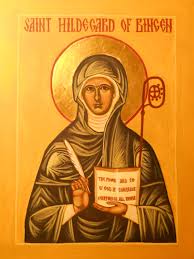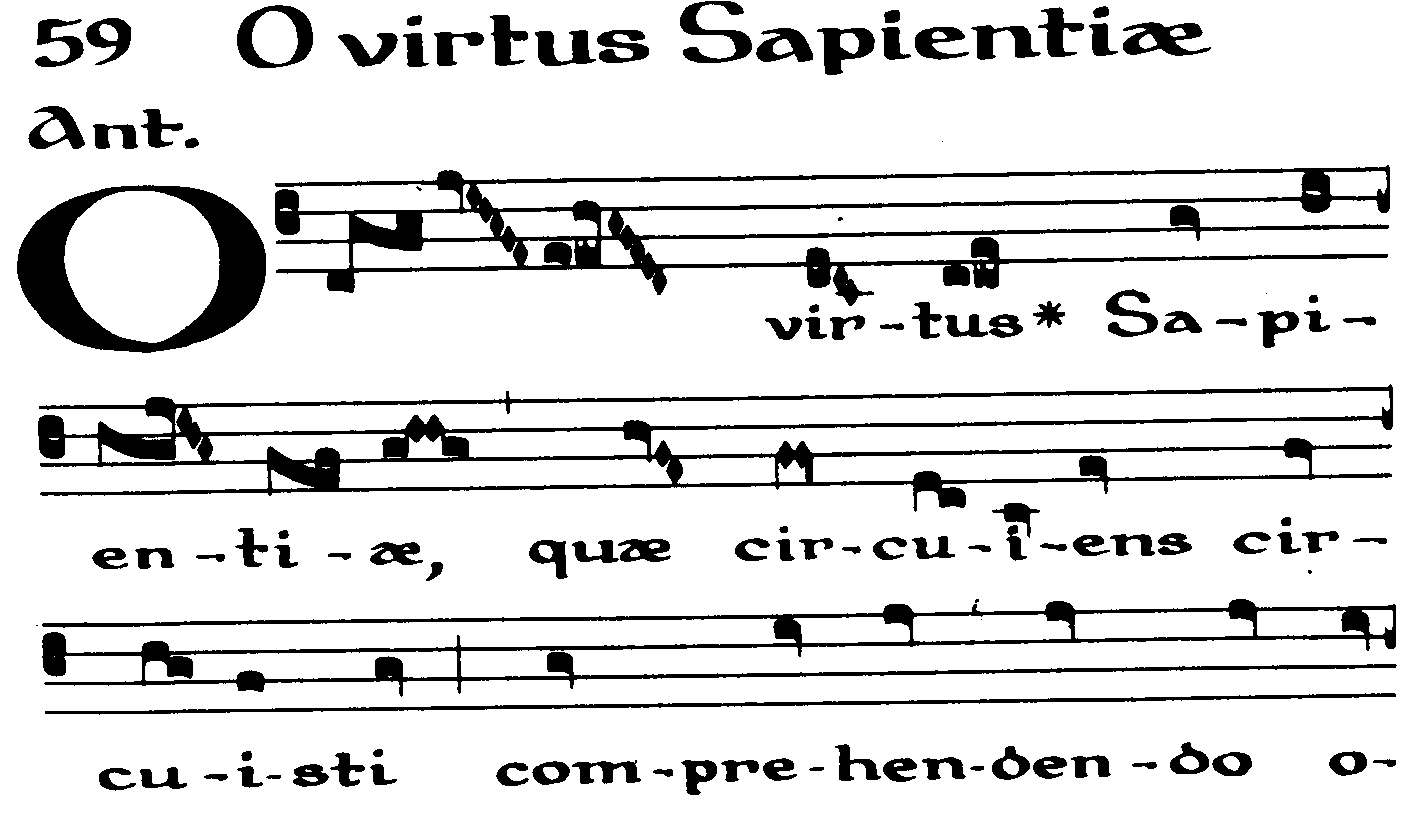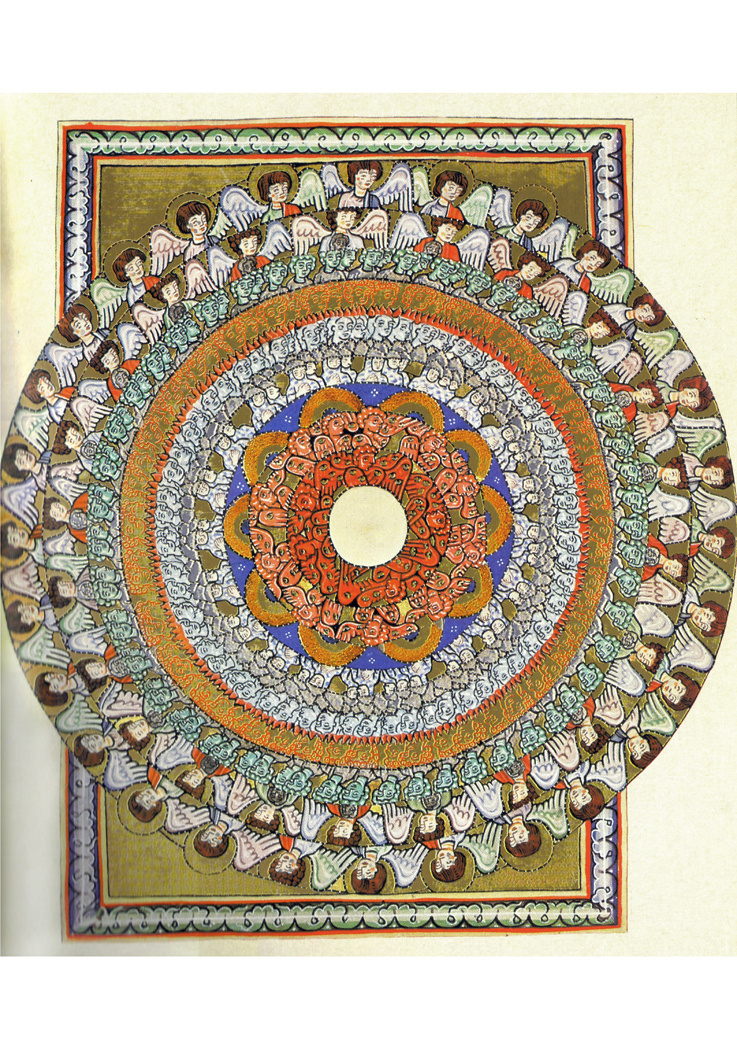“It happened in the year 1141 of the Incarnation of God’s Son Jesus Christ, when I was forty-two years and seven months old, that the heavens were opened and a fiery light of great brilliance came and suffused my whole brain and set my whole heart and breast afire like a flame – yet not burning but warming, as the sun warms an object on which it sheds its rays. And suddenly I came to understand the meaning of the book of Psalms, the Gospel, and the other canonical books of both the Old and New Testaments — … in a marvelous way, I had sensed the power and mystery of secret, wonderful visions in myself from girlhood, from the age of five, even to the present time.” Hildegard of Bingen.
Above all, she maintained a great and faithful love for Christ and the Church.
Pope Benedict
Over the next few weeks we will look at the lives of Christian women mystics. As stated in last week’s post, Mysticism is hard to define. Christian mystics seek a closer experience of union with God. For mystics this is not just a paranormal experience, but a very real, non-abstract experience. Certainly there were mystics who did some really strange things, but many were quite orthodox in their faith and led pious Christian lives. Hildegard of Bingen is a good example of serious Christian mystic and I am glad that our series on Christian mystics begins with her.
 Hildegard of Bingen (1098 – 1179) is best known as a twelfth-century abbess with an extraordinary mind and she is known for her visions. Whatever one thinks about the subject of visions and dreams, certainly Hildegard was a wise, talented, intelligent, dedicated, and devout Christian woman who rose above her circumstances to serve God in extraordinary ways. She has been authenticated by the pope in her day (Eugene III) and recently by Pope Benedict.
Hildegard of Bingen (1098 – 1179) is best known as a twelfth-century abbess with an extraordinary mind and she is known for her visions. Whatever one thinks about the subject of visions and dreams, certainly Hildegard was a wise, talented, intelligent, dedicated, and devout Christian woman who rose above her circumstances to serve God in extraordinary ways. She has been authenticated by the pope in her day (Eugene III) and recently by Pope Benedict.
Hildegard was born around 1098 in Bemersheim, Germany, the daughter of a knight and his pious wife. Since Hildegard was their tenth child they offered her as a tithe to God. It was not uncommon in the Medieval Era for parents to place children in monasteries for their upbringing and eventual profession. When she was only eight years old, Hildegard went to a convent to stay with her Aunt Jutta.
While living with Jutta, Hildegard learned the psalms in Latin and how to sing the monastic hours. Women in religious communities were highly educated. Hildegard had access to the Bible, many commentaries, writings from the church fathers, and even medical texts. Hildegard was also tutored by Volmar, a monk at a nearby monastery. Volmar became Hildegard’s lifelong spiritual director as well as a friend and secretary.
When her aunt Jutta died in 1136, Hildegard was chosen to be the abbess in her place. Hildegard was thirty-eight years old.
There is more information about Hildegard’s life, including the books and plays she wrote, the music she composed, and her preaching and teaching activities in “Hildegard of Bingen” posted on May 11, 2011, on this blog site.
she wrote, the music she composed, and her preaching and teaching activities in “Hildegard of Bingen” posted on May 11, 2011, on this blog site.
In this post we will look at one aspect of Hildegard’s theology – The Holy Spirit.
On October 7, 2012 Hildegard of Bingen was named a Doctor of the Church by Pope Benedict. In his address to the Synod of Bishops he said:
Saint Hildegard of Bingen, an important female figure of the twelfth century, offered her precious contribution to the growth of the Church of her time, employing the gifts received from God and showing herself to be a woman of brilliant intelligence, deep sensitivity and recognized spiritual authority. The Lord granted her a prophetic spirit and fervent capacity to discern the signs of the times. Hildegard nurtured an evident love of creation, and was learned in medicine, poetry and music. Above all, she maintained a great and faithful love for Christ and the Church.
Pope Benedict’s sermon sums up Hildegard’s life honestly. He alludes to Hildegard’s prophetic spirit and certainly Hildegard’s visions were the basis for her authority as a teacher in the church. Hildegard made positive contributions to society. In her day she had the affirmation of Bernard of Clairvaux who presented her writings to Pope Eugene III who declared her writings authentic. This made her a celebrity. Pilgrims came from far and wide to hear her speak. She also traveled throughout Germany preaching and writing. Many others came because she was an herbalist and had a reputation as a healer.
As twentieth century Christians we have a little trouble when people speak of having visions. But during the Middle Ages, visions were not uncommon. We will be looking at Medieval saints who had visions for the next few weeks. In next week’s post we will discuss how visions fit into theology. No matter what we think of visionary activity, it is important to keep in mind that Jesus told us that it is the fruit produced in a person’s life that we are to judge (Matthew 7:16).
Hildegard produced much fruit. Certainly many scholars, religious leaders, historians, and devout believers consider Hildegard an extraordinary woman. Her writings inspired many then and now to deepen their spiritual lives in prayer and service. No matter what century Hildegard had lived in, she would have been considered a devout Christian with amazing gifts.
Barbara Newman in her book, “Voice of the Living Light: Hildegard of Bingen and Her World”, sums up Hildegard’s contributions to church history:
Hildegard was the only woman of her age to be accepted as an authoritative voice on Christian doctrine; the first woman who received express permission from a pope to write theological books; the only medieval woman who preached openly, before mixed audiences of clergy and laity, with the full approval of church authorities; the author of the first know morality play and the only twelfth-century playwright who is not anonymous; the only composer of her era (not to mention the only medieval woman) known both by name and by a large corpus of surviving music; ….
One important contribution of Hildegard’s theology is her praise of the Holy Spirit. Some of her most beautiful work is found in her songs. One example is her “O ignis spiritus paracliti” written to honor the Holy Spirit.
O spirit of fire, bringer of comfort,
Life of the life of every creature,
You are holy, giving life to forms.
You are holy,
anointing those perilously broken;
you are holy,
cleansing foul wounds.
O breath of holiness,
O fire of love,
O sweet savor in our breasts,
infusing hearts with the scent of virtue.
For Hildegard the Holy Spirit is associated with abundant life. The Holy Spirit is also the One Who brings understanding of the Scriptures (John 16:13). He helps believers in their search for knowledge and wisdom.
Another way in which Hildegard expressed her faith was in her art. This picture is called the “Choirs of Angels” and is found in her book Scivias (26 of Hildegard’s prophetic visions).
Composer, writer, artist, poet, prophet, theologian, healer, teacher, and monastery abbess, Hildegard is one of the most amazing women in church history. She was able to integrate her thinking about theology, music, and teaching in a way that gives us a holistic picture of life. She truly believed that she was in communion with God. Her visions helped her to understand and appreciate God.
Hildegard worked tirelessly at her calling until God called her home at the age of 82 on September 17, 1179.
Hildegard’s theology of the Holy Spirit speaks to us today. It is all too common to hear sermons on the Father or the Savior without mentioning the Spirit. Hildegard emphasized the One-ness of God – the complete Triune God.
Hildegard calls us today to pay more attention to the Holy Spirit. Her life was an ongoing conversation with the Holy Spirit. We need that message in our twenty-first century materialistic society. Is the Holy Spirit real in our lives? Is He there helping us daily in our Christian lives? If we really believe that, then like Hildegard we are practicing a form of mysticism. We should not be afraid of it but embrace it as an aspect of a holistic life – body, soul, and spirit.


